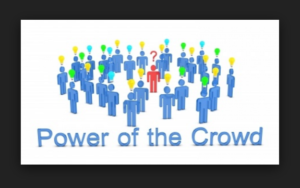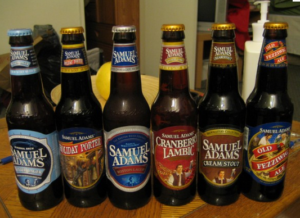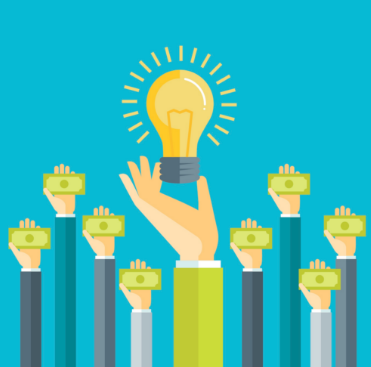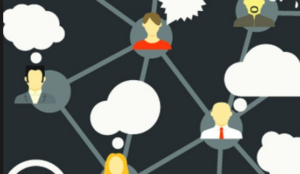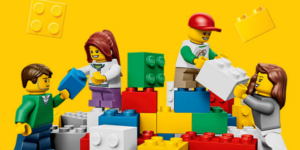Does your company do crowdsourcing in any form? Have you done any recent reading or research on crowdsourcing examples design? We follow this topic quite closely and have written several blogs on the topic and the businesses that employ it. Here are 4 very good business crowdsourcing examples to follow and learn from.
A good innovation business creates an environment where traditions can be challenged.
Crowdsourcing design is not just for new entrants challenging established players; the latter can also leverage crowdsourcing to their advantage, enabling users to design new products and test the demand at the same time.
Related: Studying Innovative Change for Creative Business Ideas
And for the younger generation, crowdsourcing is simply a normal way of doing things. Crowdsourcing, the practice of obtaining services, ideas, or content by soliciting contributions from a large community of people (usually online), can often be an inexpensive solution to business challenges that drives major brand loyalty and engagement.
Here are the best business crowdsourcing examples our research has found:
Fisher-Price
Fisher-Price utilized a crowdsourcing strategy to develop two new characters for its Little People, a toy line featuring a variety of characters that reflect a child’s own community members. The traditional process for creating a new character can be lengthy and expensive. First, the innovation and marketing teams would meet to brainstorm about potential new characters. Designers would then render a number of characters (sometimes over a dozen).
They would then test them in focus groups, edit and re-render them, do quantitative analysis, and finally manufacture them. And of course, there would be lots of uncertainty as to how successful the characters would be with target customers. This process can be very costly and take several months to come to fruition – and because focus groups can be unreliable, there’s no guarantee that the finished product will sell.
By soliciting ideas for new characters directly from their social community, Fisher-Price was able to create two new characters in about four weeks at a fraction of the cost – and because the ideas came directly from Fisher-Price customers, they are much more likely to be successful.
As an added bonus, in addition to the huge cost and time savings from crowdsourcing, the brand saw a significant lift in engagement and loyalty during the crowdsourcing campaign.
Lego Cuuso crowdsourcing platform
Lego has become a mammoth of the toy industry, but a nimble mammoth, one that seems quite able to adapt to the climate change of product design in the age of crowdsourcing. After prototyping, testing, and refining their concept for three years in Japan, Lego went global with the beta version of its Cuusoo crowdsourcing platform. Their simple objectives were to increase the number of product ideas while improving their customer engagement.
The business model is simple: any user can submit a product design, which other users will be able to vote for. When a submission racks up 10,000 votes it gets a formal stage-gate review and unless legal flaws or other showstoppers are identified, it moves into production.
The idea creator receives a 1% royalty on the net revenue. It is too early to say how many voted-for submissions will fail the internal stage-gate review, but if Lego manages to provide clear feedback about submissions that fail, it will maintain the transparency of the scheme, which is essential to keep the user base engaged.
Lego enjoys 3 unprecedented benefits from this crowdsourced product development process:
Wider community
… for the ideation phase, which will inevitably turn up many more ideas than Lego’s own designers, however talented, could do. In classic crowdsourcing fashion, the Shinkai 6500 submarine … the first project that emerged through this process – saw the Lego amateur designers reach out to the marine life science community for advice.
The very cost-efficient development phase
… whereby unsuccessful projects cost nothing to Lego and projects that go into production attract a very modest 1% royalty cost.
Virtually free pre-launch campaign
… through the voting phase that creates a buzz among the fan base and provides a clear metric on what the fan base wants to buy.
My Starbucks Idea
The My Starbucks Idea website, where Starbucks does its business crowdsourcing, has been actively engaging customers for over 5 years now. It encourages customers to submit ideas for better products, improving the customer experience, and defining new community involvement, among other categories.
Clearly, Starbucks has seen and believes what Peter Drucker has to say about business adaptability … do new things or become extinct. Customers can submit, view, and discuss submitted ideas along with employees from various Starbucks departments ‘Idea Partners’.
The company regularly polls its customers for their favorite products and has a leaderboard to track which customers are the most active in submitting ideas, comments, and poll participation.
The site is at once a crowdsourcing tool, a market research method that brings customer priorities to light, an online community, and an effective internet marketing tool.
Sam Adams Beer
Have you been thinking about using social media market research? Perhaps as a novel crowdsourcing process? If so, check out Sam Adams. Sam Adams, the American beer company, used an interactive Facebook application to engage fans for input which permitted them to create a custom beer.
Another example of how businesses are using social media market research to engage and solicit feedback from customers and extend this engagement to crowdsourcing products and services. They have demonstrated some very creative crowdsourcing ideas with this campaign.
Titled ‘The Crowd Craft Project’, Sam Adams consumers were able to give feedback on the company’s latest offering, commenting on a number of categories used to describe the drink such as color and body.
The most popular categories as selected by Facebook fans were then used by the company’s brewers to develop the new drink which was brewed in February. The beer was distributed in March during what Sam Adams described as a ‘well-known interactive annual festival in Austin, TX’ which meant SXSW. It was then served in a number of Austin bars and at the company’s brewery, before experiencing a wider release.
Conclusion
Lots of ideas here that can be easily replicated … which ones do you feel could benefit your business? How could you improve these concepts for your business?
Have any other business crowdsourcing examples to offer?
So what’s the conclusion? The conclusion is there is no conclusion. There is only the next step. And that next step is completely up to you. It’s up to you to keep improving your business innovation process and efforts.
Lessons are all around you. In some cases, your competitor may be providing the ideas and or inspiration. Or collaborating with you. But the key is in knowing that it is within you already.
All you get is what you bring to the fight. And that fight gets better every day you learn and apply new lessons.
When things go wrong, what’s most important is your next step.
Test. Learn. Improve. Repeat.
Mike Schoultz is the founder of Digital Spark Marketing, a digital marketing and customer service agency. With 40 years of business experience, he blogs on topics that relate to improving the performance of your business. Find them on G+, Twitter, and LinkedIn.
More reading on creativity and innovation from Digital Spark Marketing’s Library:
How You Can Improve Creative Thinking Skills by Adding Constraints
The Small Business Crash Course on Creative Business Ideas
Does a Paradox on Innovation Design and Creativity Exist in Business?
